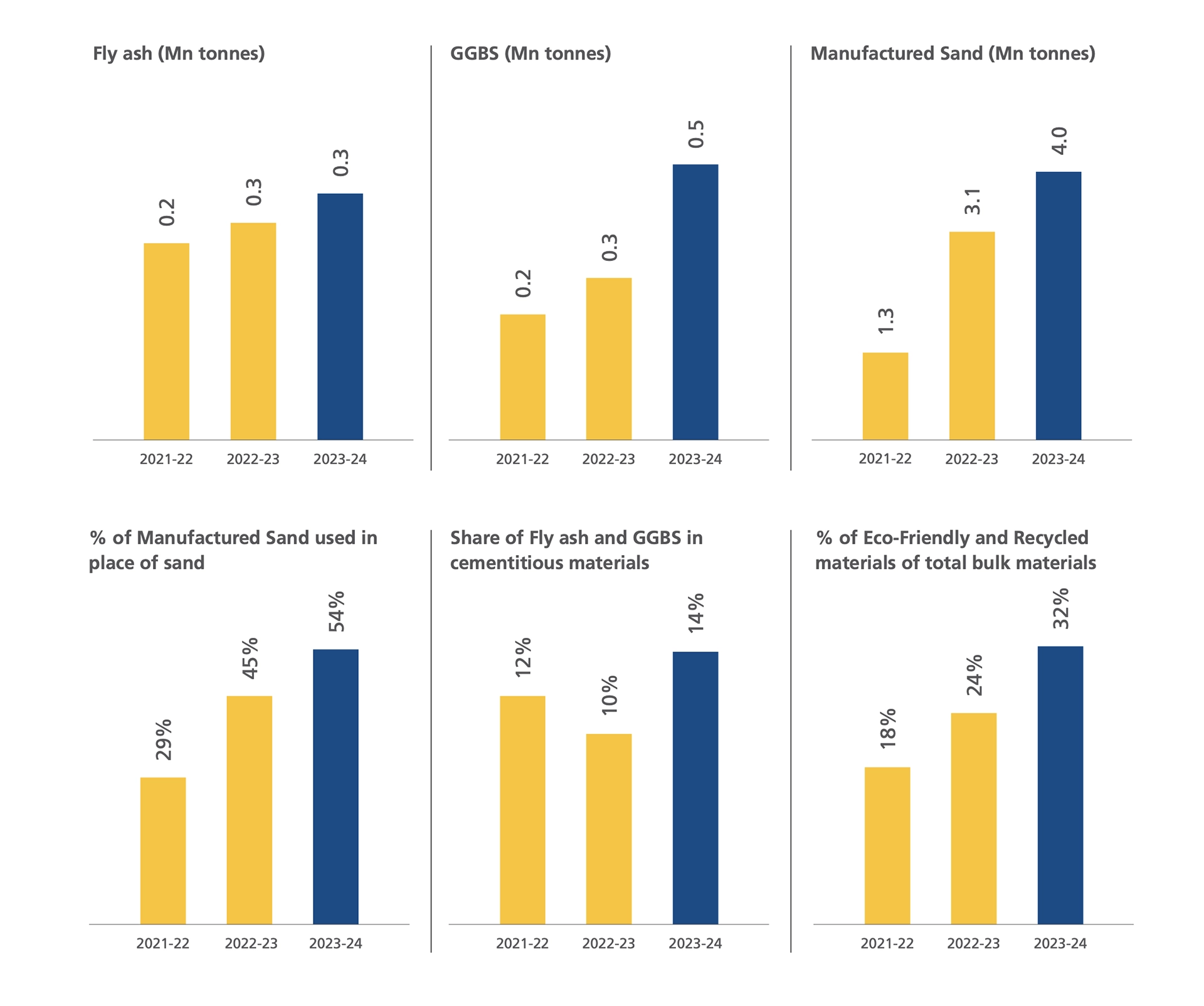- Sustainability
- Planet
- Circular Economy
Steel, cement, aggregates and sand are the major bulk materials used in our operations. We consistently strive to increase the use of sustainable and eco-friendly materials such as fly ash and Ground Granulated Blast Furnace (GGBS).
At our transmission tower production facilities, located at Pithampur and Kancheepuram, sustained efforts are being made to recycle steel and zinc that are consumed in the operations. We actively promote and maximise the use of such materials for various applications across construction projects.
Recycling and Reusing Waste
Concrete waste generated in civil work related to infrastructure projects is mostly disposed through authorised agencies or sent to landfills. The concrete waste also consumes space at the project site. Various project sites of L&T are trying to maximise the reuse or recycling of this waste at the project site itself, and thus, divert from landfills. This in-situ reuse or recycling not only helps avoid emissions linked to transportation of the waste material from the site to designated locations, but also helps in reducing consumption of natural resources for site activities.

Waste Management
Waste management is a material topic, particularly due to the significant volume of waste generated at EPC project sites. Recognising its environmental impact and resource implications, L&T has adopted a structured and responsible approach to waste management, aligned with circular economy principles. Our waste management strategy is built on the 3R framework - Reduce, Reuse and Recycle - with an emphasis on minimising waste generation at source and maximising resource recovery.
Waste management is an integral component of the Environment, Health and Safety (EHS) Management System, which includes comprehensive policies, standard operating procedures and implementation mechanisms. The operational locations, including EPC project sites and manufacturing facilities, maintain a project- or site-specific waste management plan, developed either as part of the overall project execution plan or in line with applicable regulatory requirements.
The key processes include:
- Identification and quantification of waste streams
- Segregation at source
- Collection and safe storage
- Environmentally sound disposal of residual waste
- Reuse and recycling wherever feasible



